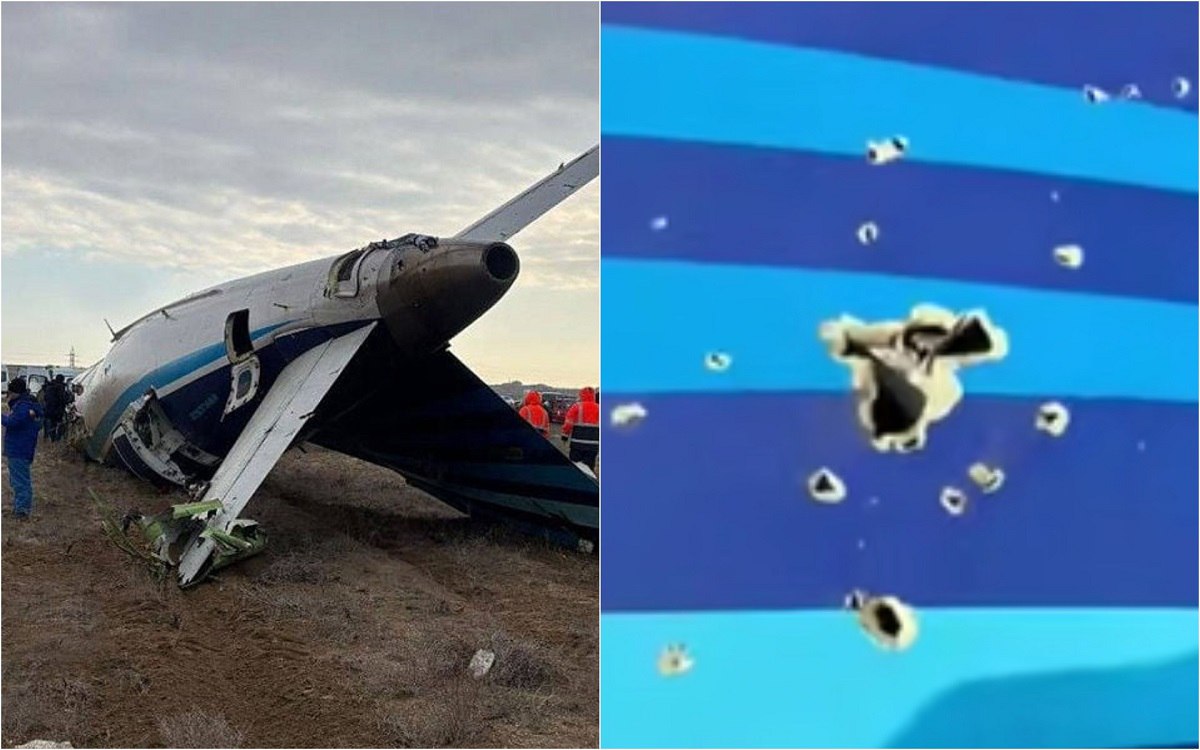Crashed AZAL plane was fully operational prior to Grozny– report
AZAL plane crash report
A preliminary report has been released on the investigation of the Embraer 190 passenger plane crash. The aircraft, operated by Azerbaijan Airlines, was on a Baku-Grozny (Chechnya, Russia) flight when it crashed near Aktau Airport in Kazakhstan on December 25, 2024.
The investigation was conducted in accordance with the requirements of Annex 13 of the 1944 Chicago Convention on International Civil Aviation.
Media reports have previously stated that the plane sustained damage over Grozny, Chechnya, Russia, after coming under fire from Russian air defenses responding to an attack by Ukrainian drones. The aircraft was then directed to Aktau but failed to reach the airport and crashed. Two crew members (the captain and co-pilot), the senior flight attendant, and 35 passengers were killed. Twenty-nine people survived.
What the report says – briefly
According to the 53-page report, as the aircraft approached Grozny early on December 25, 2024, two external impacts were recorded within seconds of each other. This triggered the autopilot disengagement alarm, and pressure and fluid levels in one of the hydraulic systems dropped to zero.
At this time, the plane was above Grozny, planning to land, but it did not receive permission from the controllers.
The crew reported a bird strike and an oxygen cylinder explosion in the cabin to the controllers. The commander decided to proceed to the backup airport in Aktau, Kazakhstan, for an emergency landing, but upon collision with the ground, the plane was destroyed and partially caught fire.
“Initial inspection of the remaining fragments revealed numerous through and non-through damages of various sizes and shapes on the tail section of the fuselage, the fin and stabilizer, the elevators, and rudders. Similar damages were found on the left engine and left wing, as well as on the aircraft’s units and components. In some areas, the damage was found to have a regular rectangular shape,” the report states.
Comment from the Ministry of Transport of Azerbaijan
According to Azerbaijan’s Ministry of Digital Development and Transport, on 25 December 2024, an Embraer 190-100 IGW passenger aircraft, operated by Azerbaijan Airlines (AZAL), crashed in Kazakhstan near Aktau Airport while operating regular flight J2-8243 from Baku (Azerbaijan) to Grozny (Russia).
“Despite the loss of lives and injuries, thanks to the professionalism, courage, and bravery of the pilots and flight attendants, the aircraft managed to make an emergency landing, saving the lives of 29 people. Immediately after receiving information about the suspected crash landing in Kazakhstan, the necessary rescue operations were carried out, and the survivors were evacuated and provided with medical assistance”, the ministry commented.
- Azerbaijani security services announce operation against terrorist group
- Gambling in Armenia: total bets increase 17-fold since 2018
- US Embassy: “Georgian Dream’s accusations are false and misinterpret Trump’s priorities”
In accordance with Annex 13 of the Chicago Convention, to which both Azerbaijan and Kazakhstan are signatories, Kazakhstan—where the aviation incident occurred—launched an investigation.
The purpose of the investigation is to ensure flight and aviation safety, rather than to determine culpability.
The findings will focus on identifying the objective causes of the crash in line with international aviation standards, with the aim of providing recommendations to ICAO and relevant stakeholders to prevent similar incidents in the future.
Azerbaijan participated in the investigation as the state of aircraft registration and operation. Azerbaijani representatives were involved at all stages, including site inspection, fact documentation, collection of photographic and video evidence, and data extraction from the aircraft’s black boxes (CVFDR devices) at the Center for Investigation and Prevention of Aeronautical Accidents (CENIPA) in Brazil.
They also gathered additional data and evidence.
The Embraer 190-100 IGW aircraft was equipped with two CVFDR devices, combining the functions of a CVR (Cockpit Voice Recorder, which records radio communications and sounds in the cockpit, such as pilots’ voices and ambient noises) and an FDR (Flight Data Recorder, which tracks key flight parameters such as time, altitude, speed, course, and aircraft position).
The preliminary findings confirm the following facts:
1. The Embraer 190-100 IGW passenger aircraft was in fully airworthy condition from the start of flight J2-8243 from Baku to Grozny. The aircraft’s flightworthiness, including the operation of its control systems, was confirmed through FDR data;
2. Both engines were functioning without technical issues up until the moment of the crash. This information is also supported by FDR data;
3. While flying through Russian airspace, including over Grozny Airport, the aircraft lost GPS signals;
4. Due to adverse weather conditions over Grozny, the aircraft was unable to make a second landing attempt. The captain then decided to return to Baku. After this decision was made over Grozny, the CVR recorded two external sounds 24 seconds apart;
5. A comparison of CVR and FDR data revealed that four seconds after the first external sound, the aircraft’s third hydraulic system failed, followed by the first hydraulic system six seconds later, and the second hydraulic system after 21 seconds;
6. Multiple impact and perforation damages were identified on the fuselage through photographic and video evidence. These damages were concentrated in the rear fuselage, with the majority found on the vertical and horizontal stabilizers, as well as on the left wing and left engine;
7. Evidence indicates that the damage found on the aircraft’s fuselage was caused by external objects.
The preliminary report does not contain any information suggesting a bird strike
8. Foreign objects unrelated to the aircraft were found embedded in the impact damage on the fuselage. These objects were extracted, and their photographs were included in the preliminary report for public disclosure. Further forensic examinations are planned to determine the exact origin of these objects;
9. At 05:13:32, the aircraft’s primary control systems failed. After this, at 05:21:42, the coordination dispatcher informed Grozny about the initiation of Operation “Clover” [air security regime];
10. There is no information in the report indicating an explosion of the aircraft’s oxygen cylinder.
In line with ICAO’s Chicago Convention requirements, a final report on the causes of the crash must be completed within a year of the incident. Kazakhstan, along with other states involved in the investigation, has already begun work on the final report,” the ministry’s response stated.





















